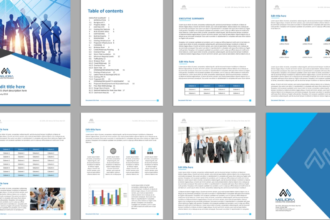The fintech industry has undergone a remarkable transformation, and user experience has become a linchpin in driving customer satisfaction and loyalty. As financial transactions increasingly move towards digital platforms, fintech companies must focus on providing a seamless, intuitive, and secure user experience. This is where digital product design agencies come into play.
The Rise of Fintech and UX Design
The intersection of finance and technology has given birth to fintech, which offers innovative solutions for various financial services. UX design, on the other hand, centers around understanding user behaviors, needs, and pain points to create products that address those requirements effectively.
Understanding User-Centric Approach
Defining User-Centricity
At the core of UX design lies a user-centric approach, where the end-users’ needs take precedence in every decision-making process. By putting users first, fintech companies can create products that cater to real-life scenarios and resonate with their target audience.
Importance of User Research
User research is a crucial step in understanding the preferences and pain points of the target users. It involves gathering insights through surveys, interviews, and data analysis to develop a comprehensive understanding of user expectations.
Creating User Personas
User personas are fictional representations of the target audience, helping designers empathize with users and make informed design choices. These personas embody demographic information, goals, motivations, and challenges of potential users.
The Role of Digital Product Design Agencies
What is a Digital Product Design Agency?
A digital product design agency specializes in creating user-centered digital experiences. They consist of multidisciplinary teams, including UX designers, UI designers, researchers, and developers, who work collaboratively to craft compelling products.
Why Choose a Specialized Agency?
Opting for a specialized agency ensures that fintech businesses receive expert insights and tailored solutions. Digital product design agencies have the expertise and experience to navigate the complexities of fintech UX design successfully.
Leveraging UX Design for Fintech
User experience design is instrumental in making fintech products more accessible, efficient, and enjoyable. By leveraging ux design for fintech, digital product design agencies enhance the overall functionality and appeal of fintech offerings.
Key Elements of Fintech UX Design
Seamless Onboarding Processes
The onboarding process is the users’ first interaction with a fintech product, and it should be seamless and intuitive. A well-designed onboarding experience ensures users can easily sign up, set up their accounts, and understand the product’s features.
Intuitive Navigation and Information Architecture

Easy navigation is paramount for fintech apps, as users often deal with complex financial tasks. A clear information architecture and well-designed navigation facilitate effortless interactions and improve user satisfaction.
Data Security and Trust
Fintech deals with sensitive financial information, and establishing trust is crucial. By implementing robust security measures and transparent communication, UX design reinforces trust between users and the fintech platform.
Designing for Accessibility and Inclusivity
The Inclusivity Imperative
Inclusivity is an essential aspect of user-centric design. Fintech products should cater to users of diverse abilities, ensuring that everyone can access and use the services without any hindrance.
Assisting Differently-Abled Users
Digital product design agencies focus on creating accessible products for differently-abled users, including those with visual, auditory, or motor impairments. This involves designing interfaces that accommodate various assistive technologies.
Emphasizing Mobile UX in Fintech Apps
The Mobile-First Approach
As mobile usage continues to rise, fintech apps must prioritize mobile UX. The mobile-first approach ensures that the app is designed with mobile devices in mind, offering a seamless experience across various screen sizes.
Mobile UX Best Practices
To optimize fintech app design for mobile devices, designers follow best practices such as thumb-friendly navigation, responsive design, and streamlined content to enhance user engagement.
Balancing Aesthetics and Functionality
The Art of Simplicity
In fintech UX, simplicity is key. By avoiding clutter and unnecessary elements, designers create clean and intuitive interfaces that make it easier for users to achieve their financial goals.
Humanizing Fintech Design
Though fintech deals with numbers and data, adding human elements to the design, such as relatable visuals and friendly language, fosters a deeper emotional connection with users.
Collaborating with Stakeholders for Success
Building Strong Partnerships
Digital product design agencies collaborate closely with fintech businesses to understand their goals, vision, and target audience. This partnership ensures that the end product aligns with the company’s brand and objectives.
Embracing Feedback and Iteration
Feedback is invaluable in UX design. Regularly seeking input from users and stakeholders helps refine the product and create a continuous cycle of improvement.
Measuring UX Success
Key Metrics for Evaluation
To measure the success of fintech UX, agencies track essential metrics such as conversion rates, user retention, and customer satisfaction. These metrics provide insights into the product’s effectiveness.
Continuous Improvement Strategies
UX design is an ongoing process. By analyzing data and user behavior, agencies can identify areas for improvement and implement iterative changes to enhance the overall experience.
The Impact of Great
Great fintech UX can significantly influence a company’s success and customer satisfaction. Let’s explore how a user-centric approach to fintech design can elevate the overall experience for users and drive business growth.
Enhanced User Engagement
When fintech products offer a seamless and enjoyable user experience, users are more likely to engage with the platform regularly. A user-friendly interface encourages customers to explore various features and functionalities, leading to increased usage and higher customer retention rates. By keeping users engaged, fintech companies can foster brand loyalty and encourage customers to advocate for their services.
Improved Customer Retention
A well-designed fintech app that prioritizes user needs reduces friction and frustration, making customers more likely to stay loyal to the platform. Retaining existing customers is cost-effective and essential for long-term business success. With a strong focus on user-centric design, digital product design agencies can help fintech companies create products that customers will love and continue to use.
Competitive Advantage
In today’s crowded fintech market, standing out from the competition is crucial. Offering an exceptional user experience can become a key differentiator for fintech companies. Users are more likely to choose a platform that is easy to use, visually appealing, and meets their specific needs. By investing in UX design and collaborating with specialized digital product design agencies, fintech companies can gain a competitive edge and attract a larger user base.
Future Trends in Fintech UX
The world of fintech and UX design is ever-evolving. As technology advances, new trends and innovations emerge, reshaping the landscape of financial services. Here are some future trends that will likely impact fintech UX:
AI-Powered Personalization
Artificial Intelligence (AI) is revolutionizing the way fintech companies interact with their customers. AI algorithms can analyze user data and behaviors to offer personalized recommendations and solutions tailored to individual needs. This level of personalization enhances the overall user experience and builds stronger relationships between users and fintech platforms.
Voice User Interfaces (VUI)
Voice-based interactions are becoming increasingly popular, and fintech companies are incorporating voice user interfaces into their products. VUI allows users to perform various tasks through voice commands, making interactions more intuitive and convenient. Voice-enabled fintech apps cater to users who prefer hands-free interactions, expanding accessibility and usability.
Augmented Reality (AR) Integration
While still in its early stages, AR has the potential to revolutionize fintech experiences. AR can overlay financial data onto the physical world, enabling users to visualize and interact with financial information in real-time. From visualizing investment trends to virtual shopping experiences, AR integration in fintech UX will open up exciting possibilities for users.
Conclusion
In today’s digital age, fintech companies must prioritize user-centric design to thrive in the competitive market. The role of digital product design agencies is instrumental in crafting fintech products that resonate with users, enhance engagement, and drive business growth. By combining cutting-edge UX design principles with the latest technological advancements, fintech companies can deliver exceptional experiences that cater to the diverse needs of their users.















